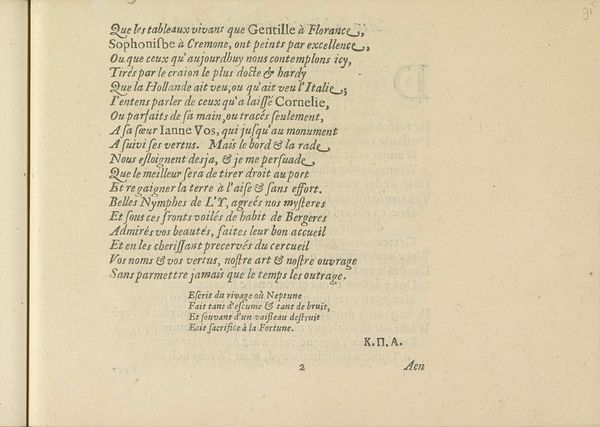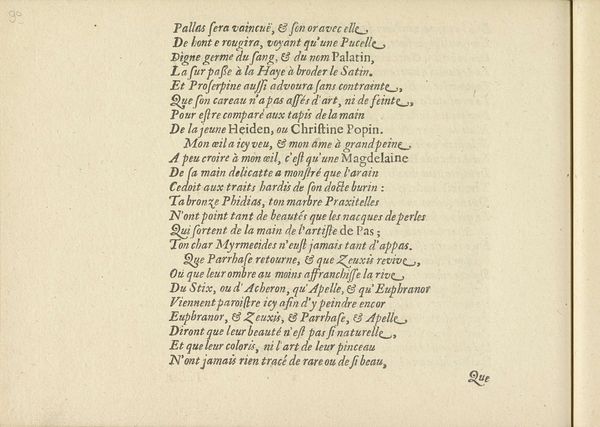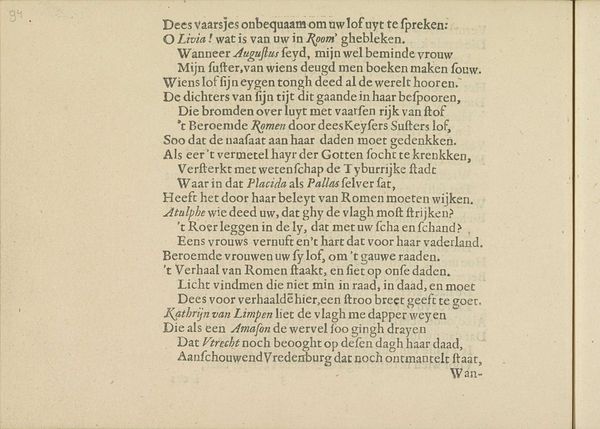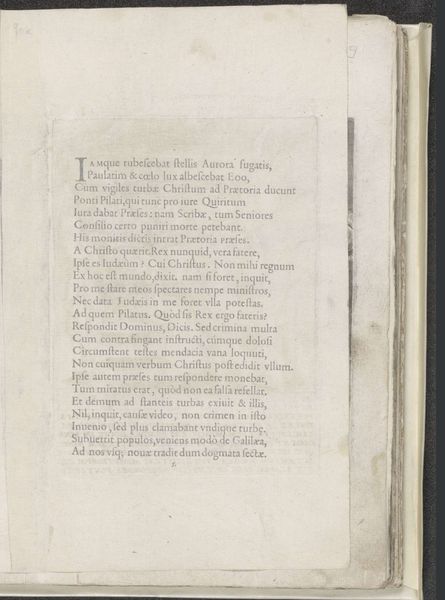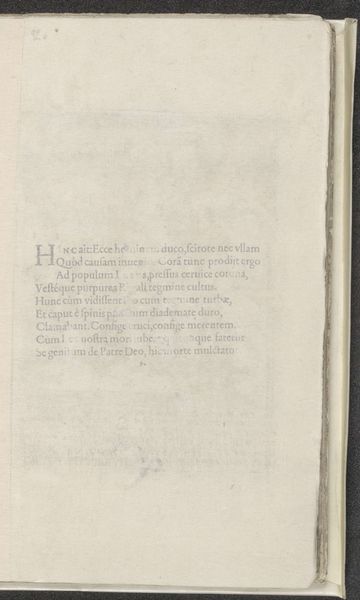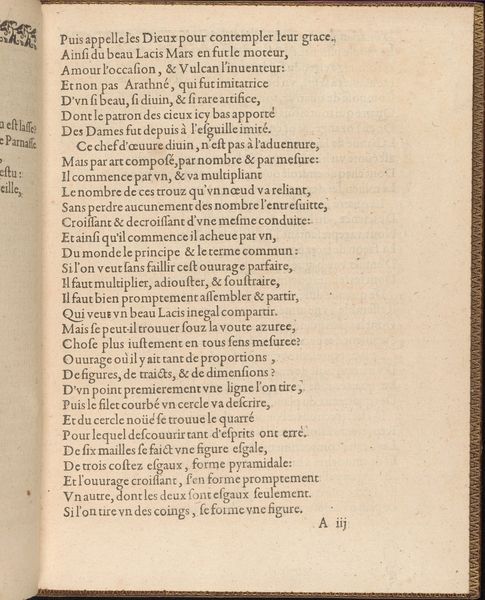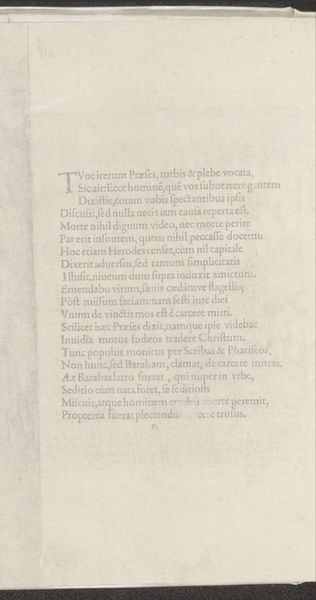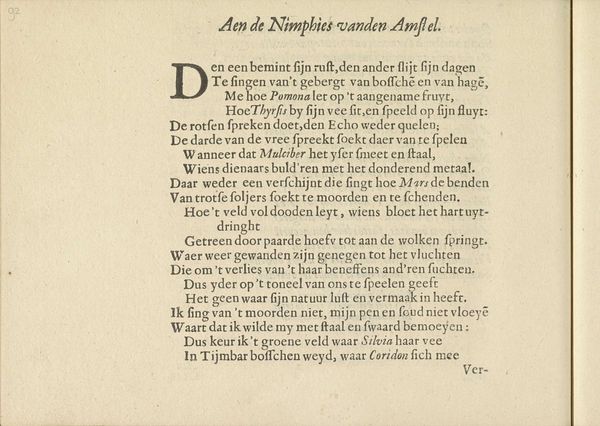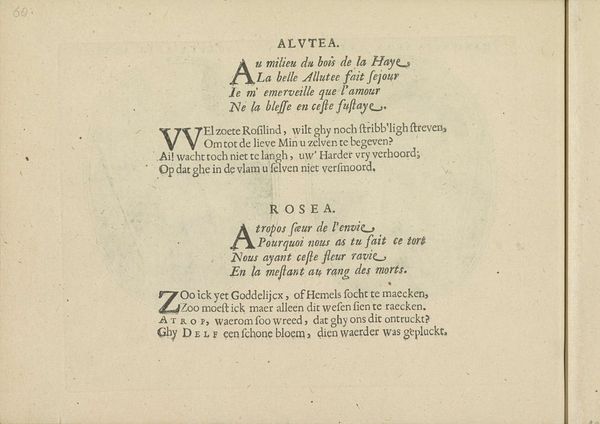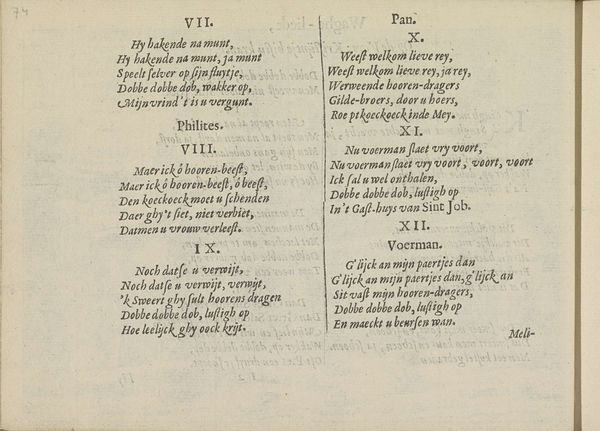
Nederlandstalig gedicht op de Nimfen van de Amstel, pagina 11 1640
0:00
0:00
graphic-art, print, textile, paper, typography
#
graphic-art
#
dutch-golden-age
# print
#
textile
#
paper
#
typography
Dimensions: height 140 mm, width 190 mm
Copyright: Rijks Museum: Open Domain
Editor: So, this is a page from "Nederlandstalig gedicht op de Nimfen van de Amstel," or Dutch poem on the Nymphs of the Amstel, dating back to 1640. It’s a print, part of a larger book, I imagine, created by Crispijn van de Passe the Younger. It's basically a block of text. How do you interpret this kind of piece? What can we even learn from it? Curator: Well, at first glance, it might seem like just text, but let’s consider the context. This was printed during the Dutch Golden Age, a period of immense social and economic change. Printing became a powerful tool for disseminating ideas and solidifying cultural identity. So, what we see here isn’t just a poem, it’s a piece of a larger public conversation. Editor: So the content of the poem matters less than the fact that it *exists* as a printed page? Curator: Not at all! The content provides essential clues. Notice the themes: navigation, nymphs, Neptune – they all speak to Amsterdam's burgeoning maritime power and its relationship with the sea. It uses classical imagery to elevate Dutch accomplishments. Think about who this poem was intended for: a literate, urban audience proud of their city's naval achievements. It's shaping and reflecting their values simultaneously. Do you see how this ties into the broader narrative of Dutch ascendancy? Editor: Yes, it makes much more sense now. It's like the poem is a form of propaganda, celebrating Amsterdam’s naval success and embedding it within a classical framework to enhance its importance. I never thought of a poem as something so actively shaping society. Curator: Exactly! These printed pages, these poems, they weren’t passive objects. They were participants in a dynamic cultural and political landscape. It really brings history to life, don't you think?
Comments
No comments
Be the first to comment and join the conversation on the ultimate creative platform.
